No student can get through school without learning about ancient Greece and the famous Oracle of Delphi at The Temple of Apollo. The Oracle is central figure in Greek Mythology and in the history of Greece. Above all else, one of our priorities on our vacation in Greece was the Delphi day trip from Athens.
We weren’t alone in this. Evidently, day trips from Athens to Delphi are the #1 excursion from the Greek capital and The Temple of Apollo is one of the most famous sites in the country. Judging by the number of tour buses we passed on the highway, that assessment was accurate.
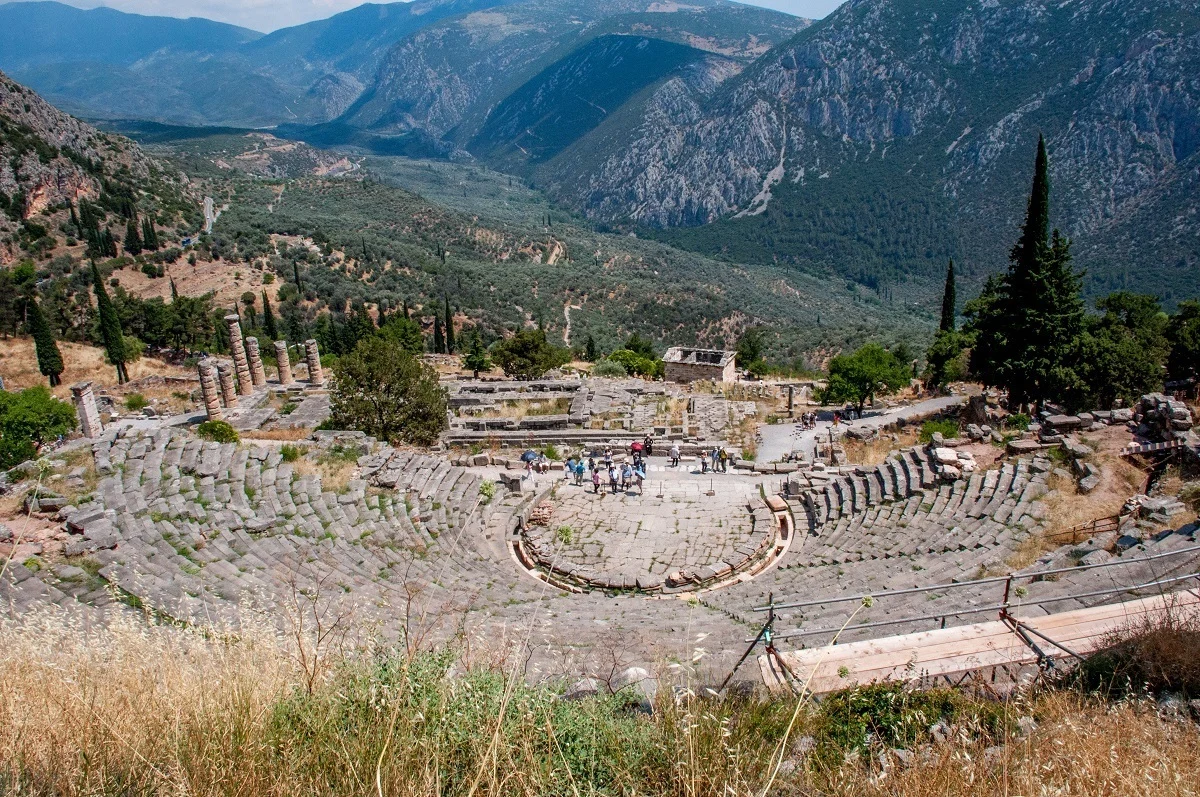
But for Laura, who spent six years studying Western Civilizations in school, this was a priority. If you are visiting Greece, how could not visit here?
So on a sunny day, we grabbed a rental car in Athens and headed north in search of Delphi, Greece – arguably the most famous site in the ancient world. Here’s everything we learned about Delphi day trips.
But first…
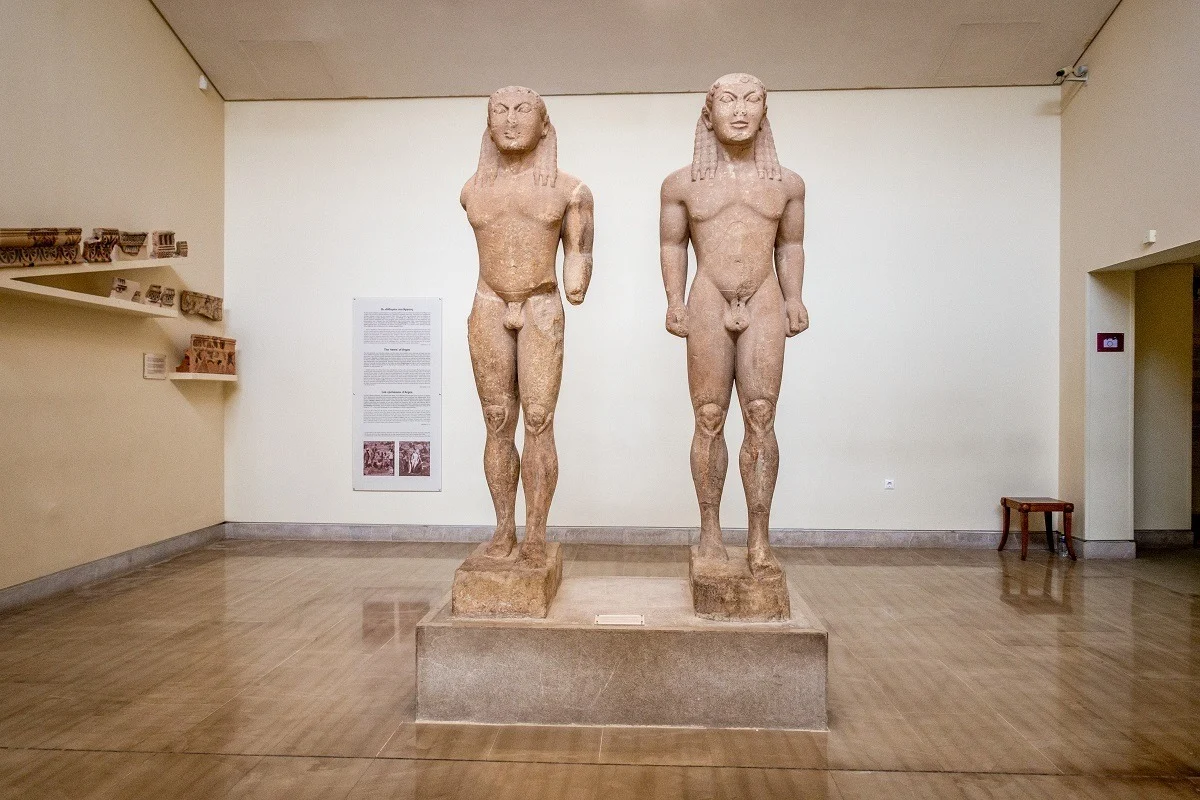
- A Refresher on The Oracle of Delphi
- What to See in Delphi, Greece
- The Archaeological Site of Delphi
- The Archaeological Museum of Delphi
- The Ruins of the Sanctuary of Athena Pronaia
- How To Get to Delphi, Greece
- Getting From Athens to Delphi by Car
- The Bus from Athens to Delphi
- Getting from Athens to Delphi by Taxi
- Delphi Day Trip Tours
- What To Bring on a Day Trip to Delphi from Athens
- Where to Eat
- Where to Stay
A Refresher on The Oracle of Delphi
Stepping back into Ancient Civilizations for a moment, how can you not remember the famous Delphi Oracle?
From the 7th century BC to the 3-4th century AD, the Oracle was the most famous person in the world…and perhaps the most powerful. The high priestess at Delphi (and it was always a woman) was known as the The Pythia and she oversaw the Temple of Apollo at Delphi. But more importantly, she was believed to speak for the Greek god of Apollo on Earth. That’s a lot of power.
For centuries, no major decision anywhere in Ancient Greece was undertaken without consulting The Pythia. People would travel across the known worlds to visit Apollo’s Oracle and receive “divine” guidance.
The Pythia or Oracle at Delphi served up common-sense advice in a simpler time. She offered advice to leaders, settled disputes, and provided practical guidance. In later times, it was rumored she had visions and predictions of the future, although where those legends started, nobody really knows since it is not supported in the writings of the ancient Greeks.
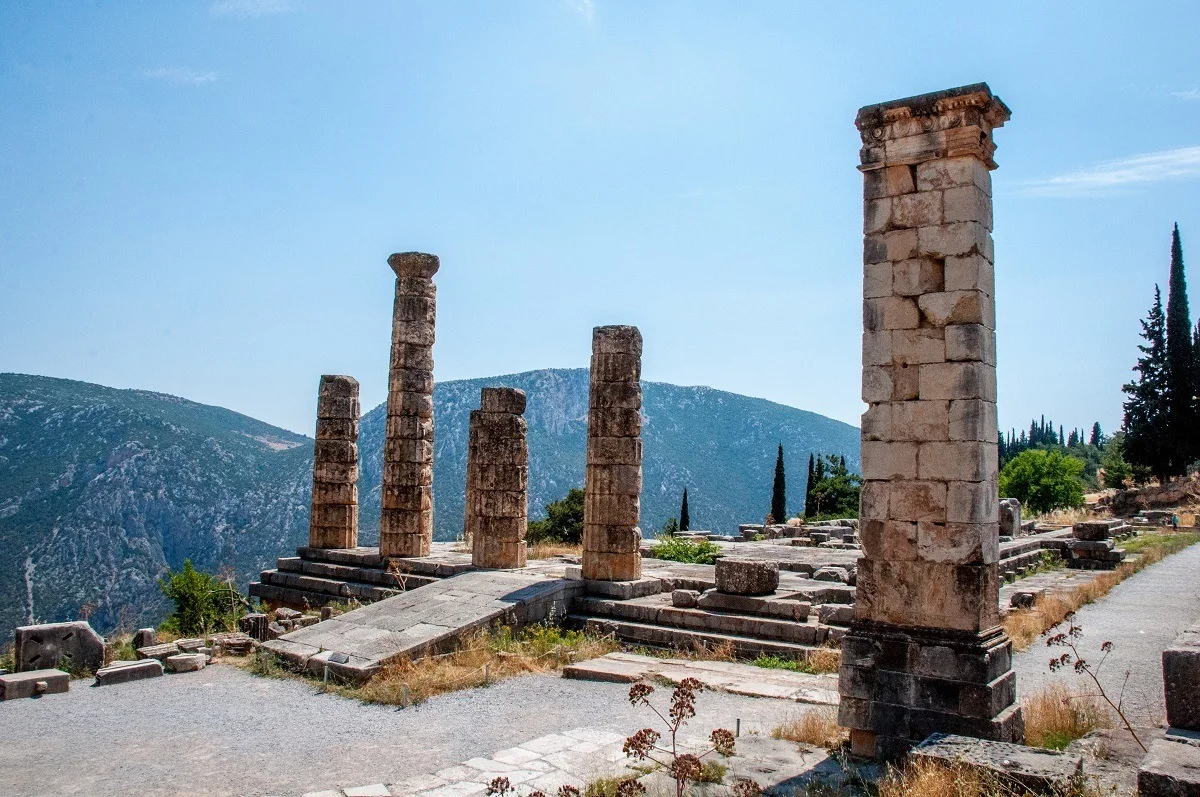
What to See in Delphi, Greece
When you visit, you are visiting the Delphi ruins. They are very well preserved, but this is still an ancient site and these are still ancient ruins. On our visit to here, we overhead some tourists grumbling that there wasn’t a recreation or a new Oracle to consult. If you’re looking for a theme park type experience, you might be disappointed.
That said, visiting Delphi is traveling back in time to see the place that was once the center of the known world (and certainly the center of knowledge). Today, this is a UNESCO World Heritage Site recognized for it’s outstanding cultural contributions. And being located high in the mountains, it is also really beautiful.
On your Athens to Delphi day trip, there are several important sites you’ll want to visit:
The Archaeological Site of Delphi
The main Delphi archaeological site is located on the main road between the towns of Delphi and Arachova, Greece. We’d wondered if it would be difficult to find. It wasn’t. Just look for all of the cars parked along the roadway.
The Sacred Way
Visiting the archaeological site at Delphi is pretty simple: follow the Sacred Way path as it winds its way up the mountain and to the right. The lower parts of the Sacred Way are lined with trees, which provide shade in the Greek sun, however the upper parts of the path are fully exposed. Before starting the climb, be sure to consult the map just inside the park entrance to get your bearings.
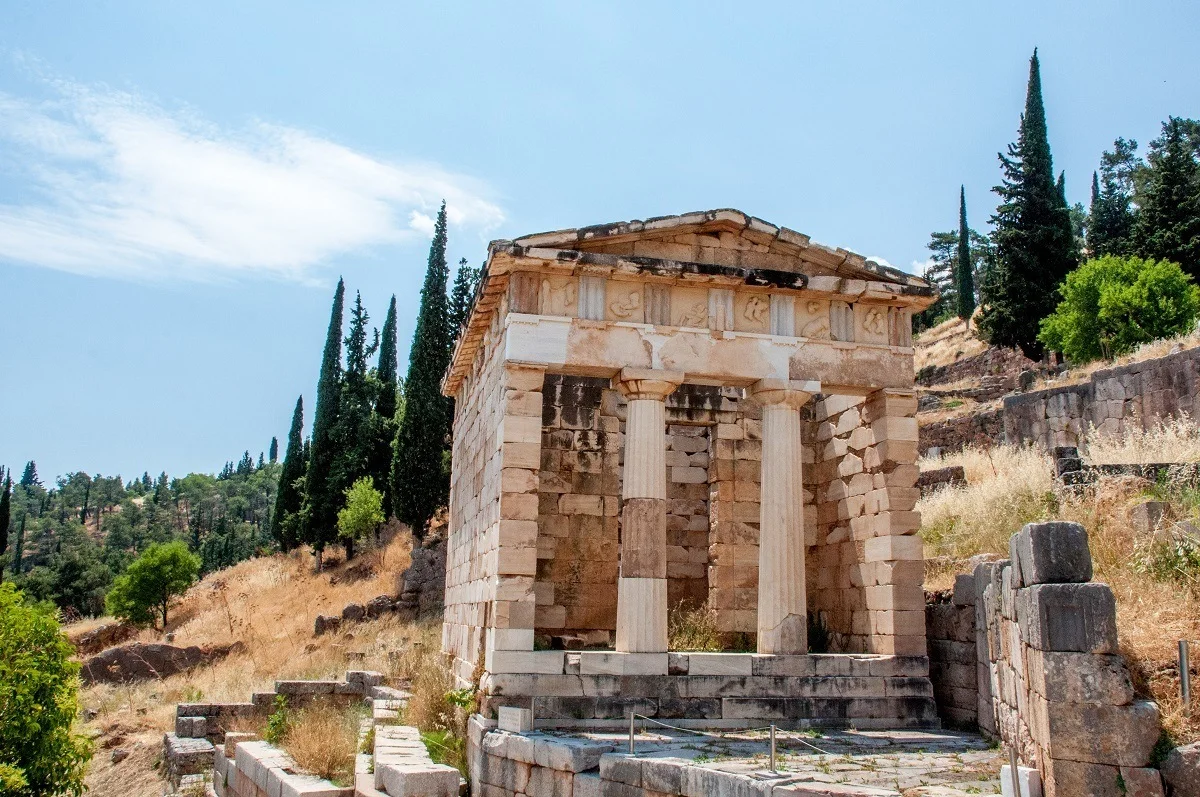
Athenian Treasury
As visitors climb the Sacred Way they pass a number of lesser excavations, including a number of treasuries. These buildings were constructed to house dedications and offerings from dignitaries that came from a specific city-state within Greece. The two most important were the Athenian Treasury and the Siphnian Treasury.
While the Treasury of the Siphnians no longer exists, the Treasury of the Athenians does, having been restored from 1903-1906, and again in 2004. (Note: The signs at the site say “The Stoa of the Athenians,” instead of Treasury, which kind of confused us.)
The reality (as we learned much later) is that the treasuries of Siphnians, Athenians and the Cnidians were collectively scavenged to recreate a single treasury: The Athenian Treasury. Statues, reliefs (called friezes), and other historical artifacts from the others can be found in the Archaeological Museum (see below).
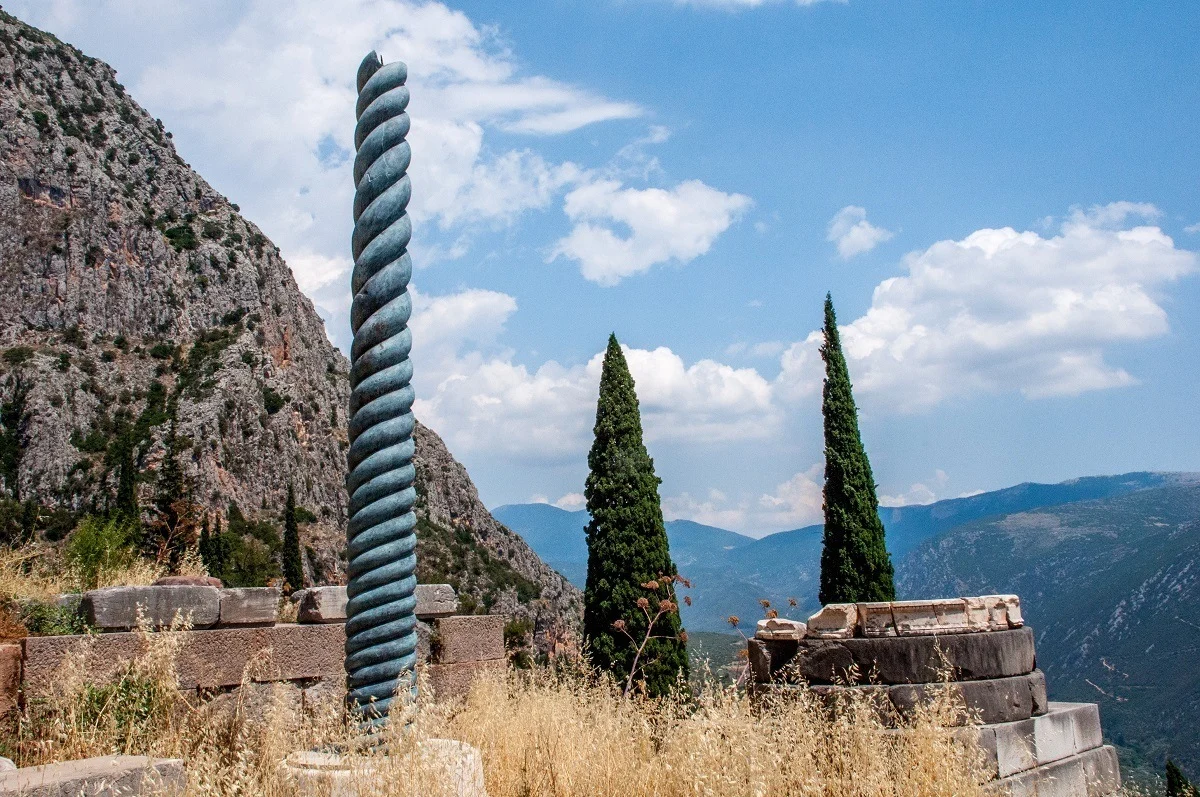
Serpent Column or Serpentine Column
Just before reaching the Temple of Apollo, there’s a black twisted column with the top broken off. This is the Serpent Column. With so many other things to see, this is easy to overlook. It was built to commemorate the defeat of the Persians at the hands of the Greeks in the Battle of Plataea in 479 BC – a battle which was believed to have been influenced by Delphi’s Oracle.
The top of the column is missing. Emperor Constantine had the tri-head serpent removed and relocated to Istanbul in 324 AD as a trophy. And yes, this is a recreation – Constantine took the original.
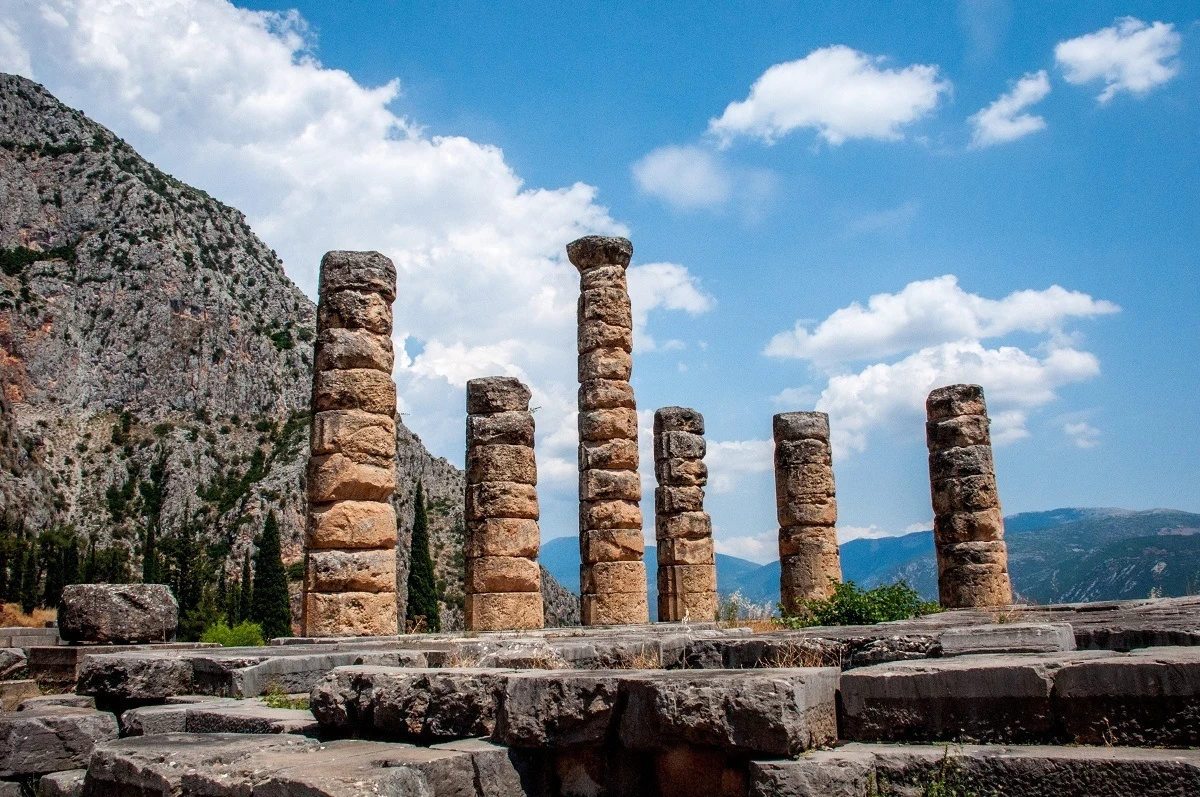
The Temple of Apollo at Delphi
This is it. This is what you came for.
And yet, upon reaching it, Apollo’s Temple of Delphi is a bit underwhelming. Against the gray cliffs of Mt. Parnassus, the Temple of Apollo at Delphi consists of just six limestone columns atop the ruins of a granite foundation. Long grasses have long ago taken to filling in the voids of the granite blocks. It was from this Temple at Delphi that the Pythian priestess would speak for Apollo and communicate the god’s insights.
My rather limited experience with ancient history left me with a lot of questions. Laura patiently answered all of them. First on my list, “Was this the oracle?” The limited signage (and the sometimes awkward English composition) had me kind of confused. I wasn’t alone in that – a group of Spanish tourists were thoroughly baffled (signs throughout the Sanctuary of Delphi are only in Greek, English and French…and sometimes poorly translated).
But yes, these are the ruins you came to see. We’ve seen more impressive Greek ruins in our travels, but none are more important than this.
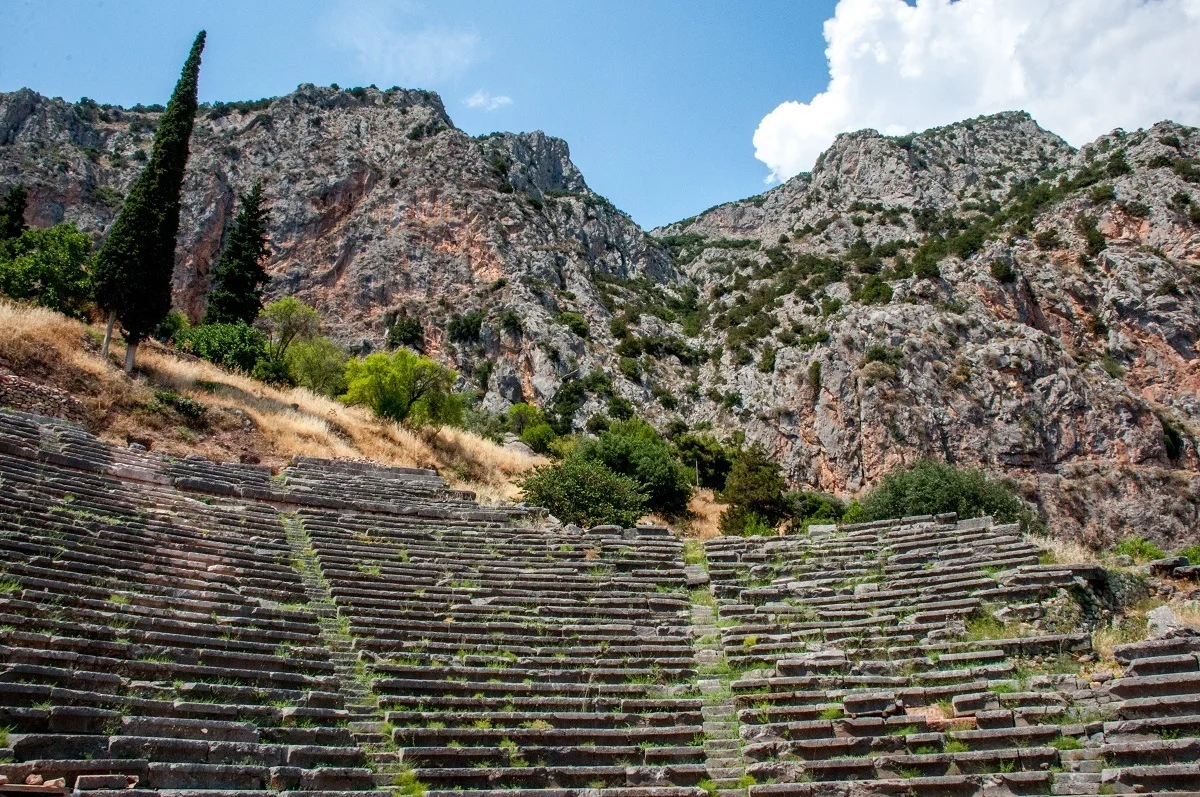
The Amphitheater
After seeing the ruins of the Sanctuary of Apollo at Delphi, many visitors head straight back to the entrance and the museum. However, there are still two other sites to be seen here.
Just above the Delphi temple site is a theater dating from the 4th century BC. The theater was able to accommodate over 2,000 people and hosted performances for visitors. You can’t deny that the view is absolutely spectacular!
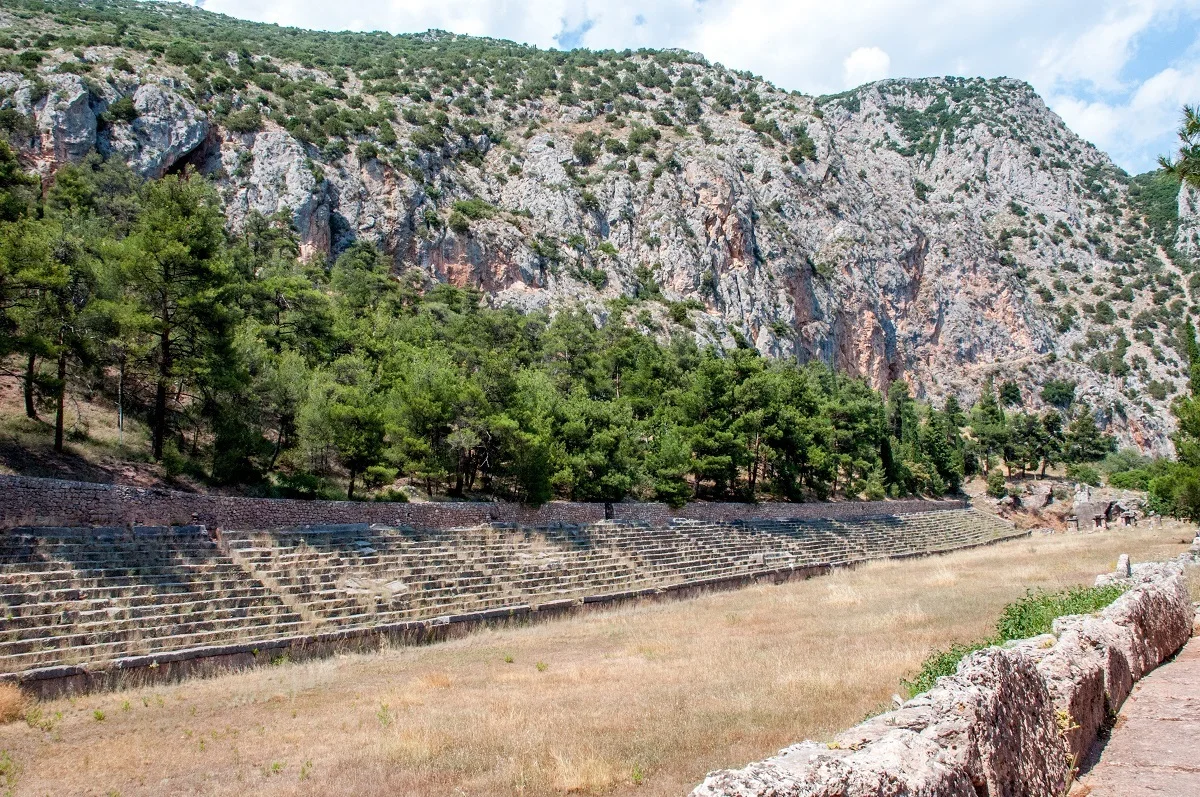
The Stadium
Above the theater, the trail winds back and forth up the side of the mountain. High above the main site is the stadium.
A little longer than the length of a soccer field (aka, football pitch) is the Delphi stadium. Here, every four years, the Pythian Games were held to honor Apollo. These games were the precursors to the ancient Olympic Games.
If you choose to hike up to the stadium, you can be assured that you’ll have the site to yourself. Most of the tour buses don’t allow enough time for visitors to make it this far and many turn back because of the heat and steep hike.
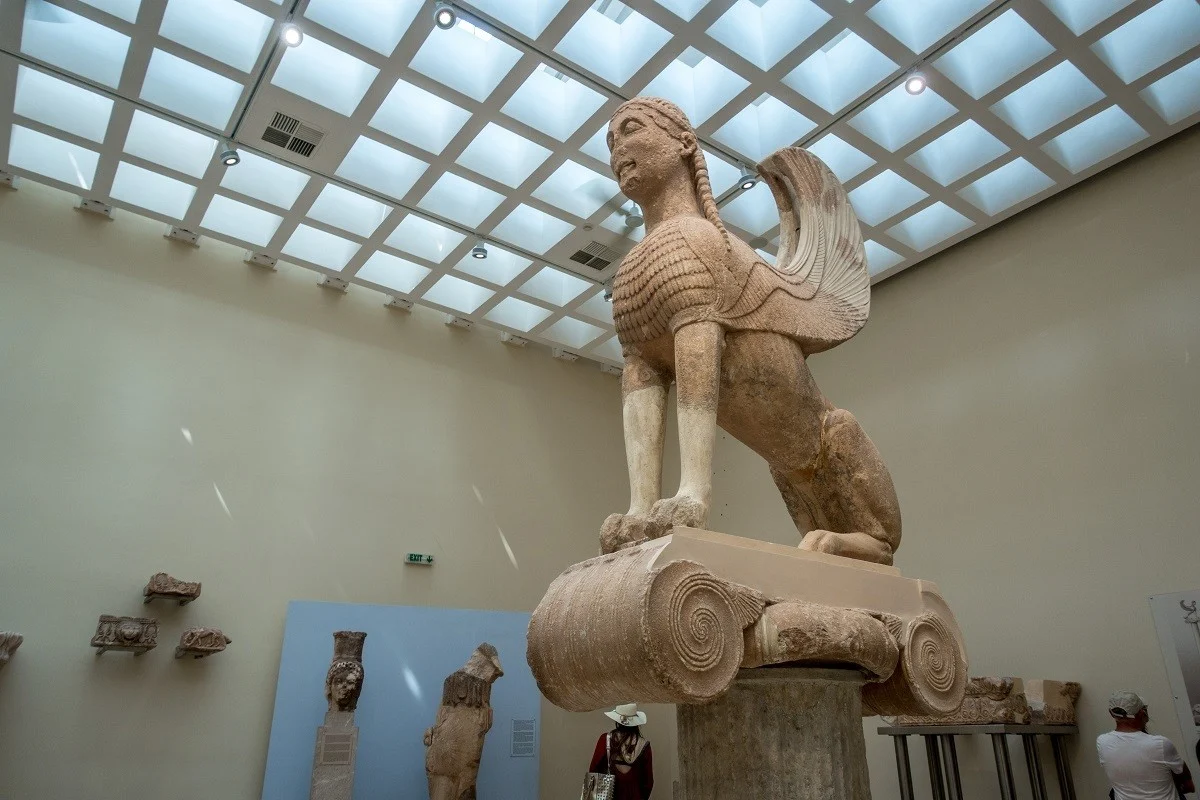
The Archaeological Museum of Delphi
We’re not museum people. We love history and information and all that. But we just don’t like museums. But the Delphi museum is excellent!
The museum positions the archaeological site in the proper historical context. It follows Greek history from the late Helladic/early Mycenaean period through Classical Greece and Hellenistic Greece, ending at the Roman conquest and the rise of the Byzantine Empire. Despite the broad period of time covered by the museum, it doesn’t bore or disappoint.
The modern building at the base of the mountain holds the artifacts that were removed from the site. Statues and friezes are the most prevalent artifacts in the museum. The friezes were interesting and are essentially high reliefs around the exterior of buildings.
Truly the statues are inspiring. Some of our favorites were the twin Cleobis and Biton statues, standing regally side-by-side. For many visitors, the towering Sphinx of Naxos is the highlight.
However, the most important piece in the museum is The Charioteer. This priceless original bronze statue is one of the greatest original treasures from ancient Greece. This statue is believed to have originally stood in a place of honor beside the Temple of Apollo and was erected to honor someone’s victory in Delphi’s Pythian Games. The details on the statue are remarkable!
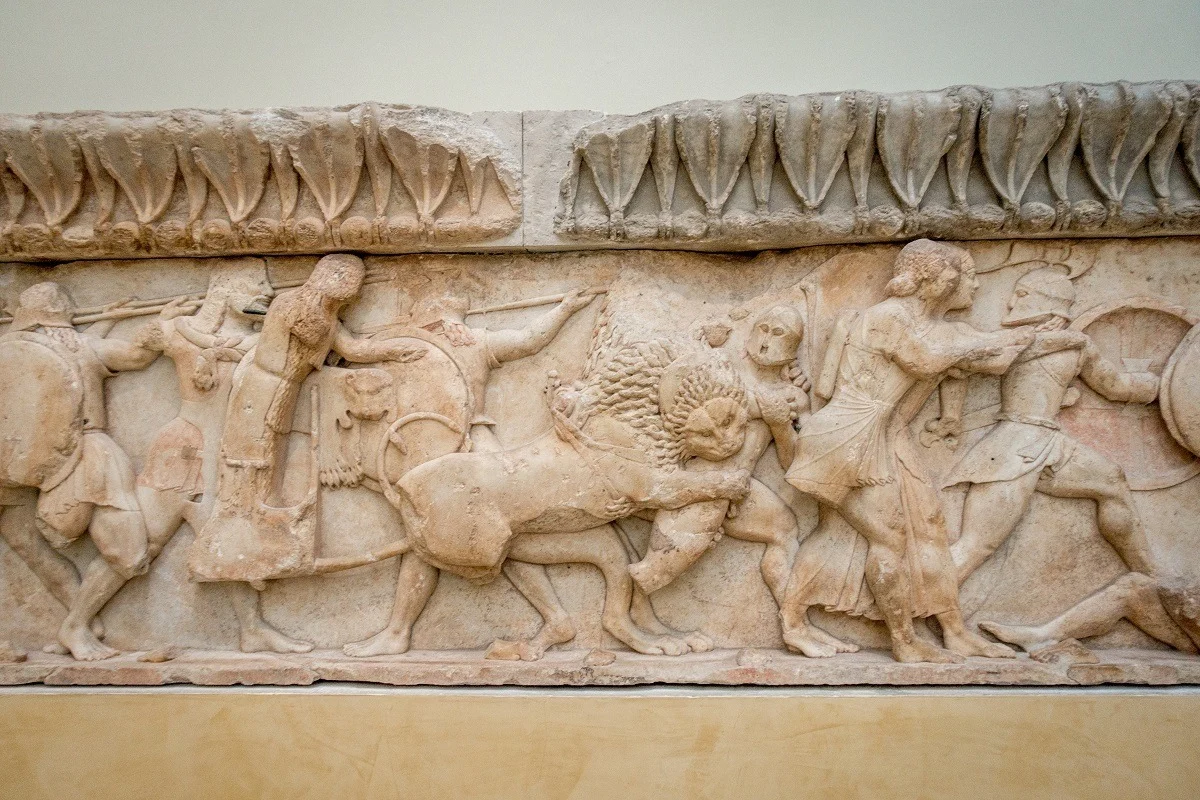
The Ruins of the Sanctuary of Athena Pronaia
After visiting the archaeological site of ancient Delphi, stop at the Sanctuary of Athena Pronaia. This is located less than a kilometer from the main site back in the direction of Athens (it is first parking turnout away from the actual Delphi site).
We recommend visiting here AFTER seeing the main site in Delphi for two reasons. First, in the mornings, the site is terribly backlit and makes for bad photos (the sun will be directly behind the Tholos). Second, the tour buses all stop here first thing in the morning meaning it can be very crowded.
However, in the ancient times, this was first stop for many as they climbed Mount Parnassus. This is why most group tours stop here in the mornings – they want you to experience the site in the way the Ancient Greek’s did.
To be sure, the extremely photogenic round temple of Tholos is a thing of beauty. Originally constructed around 360 BC, it was built to some now-unknown goddess. The site itself is special – a shrine of some sorts has stood on this exact spot since the very earliest days of the Mycenaean civilization.
The ruins of the ancient Delphi Gymnasium run parallel to the road (just downhill) and are between the Sanctuary of Athena Pronaia and the main archaeological site. Here athletes trained for the Pythian Games and you can still explore. Unfortunately for us, this site was closed for excavations during our visit.
A final note: Most visitors blow through this area pretty quickly. About 100 meters to the east of the Athena Pronaia is a road that turns to the south (downhill). If you follow that road for about 1 kilometer, you’ll come on some ancient Roman ruins on the right side. Specifically, an ancient Roman sarcophagi site. It’s not overly impressive, but it is old and is something most visitors overlook.
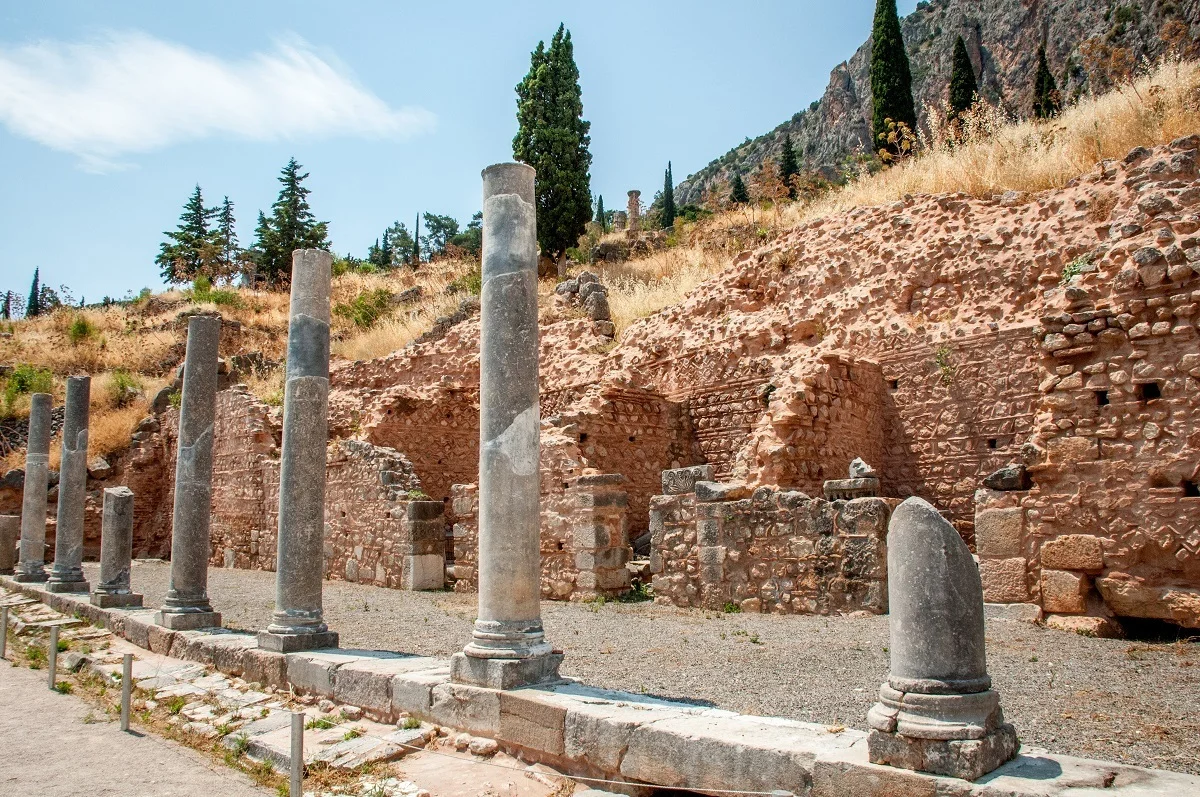
How To Get to Delphi, Greece
Getting to Delphi is part of the fun. Where is Delphi? It is located about 75 miles (as the crow flies) north and west of Athens on the south side of Mount Parnassus in southern Greece. Unfortunately, due to mountains, it is a distance of about 110 miles driving.
Visitors wishing to come to here really have four main options to get there:
Getting From Athens to Delphi by Car
The simplest, fastest, and best way to do your Delphi day trip is by car. There are a number of auto rental agencies in Athens. Although that means driving in Athens, which isn’t pleasant. We recommend taking the train to the airport and renting from there. This way you have all highway driving through the greater Athens metro area. Be sure to check prices on Athens rental cars here.
The distance from Athens to Delphi is about 110 miles and should take you about 2 to 2.5 hours. Much of the drive will be through farmland, which is quite rustic and then you’ll pass through the mountains on the way to Delphi. The route you generally follow is the A6 to the E75 to the EO48 (Note: there are tolls on this road).
Having your own car gives you flexibility in terms of timing as well as the ability to stop off and see things on the way.
The Bus from Athens to Delphi
If you’re looking for the cheapest Delphi transportation option, that’s the public bus. The KTEL of N. Fokidas SA bus company operates the bus from Athens to Delphi. The bus makes limited stops throughout the Fokida Prefecture (Phocis)
The bus to Delphi from Athens takes a bit longer, but comes with the bargain price of less than $25. The buses do fill up early (and also seem to be canceled or have the times changed frequently), so it is best to book in advance. Book online or check the bus from Athens to Delphi schedule here.
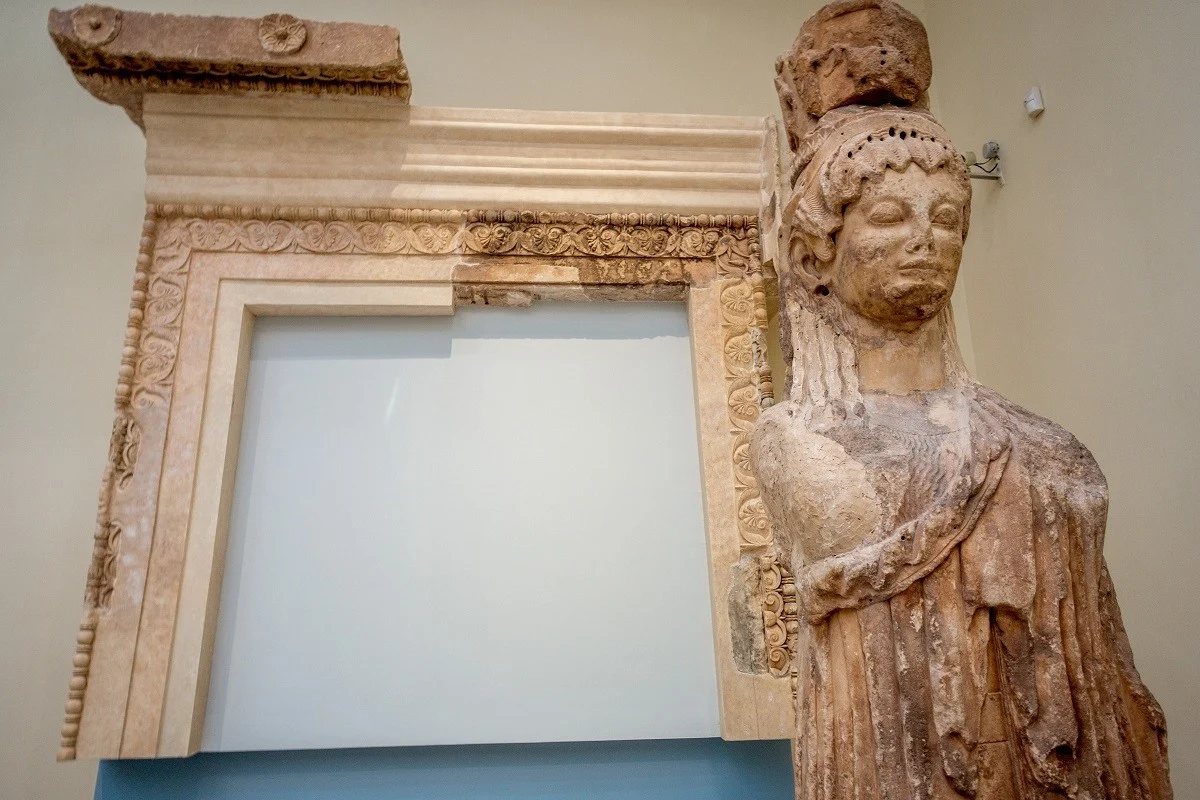
Getting from Athens to Delphi by Taxi
The yellow taxis running all over Athens can take you Delphi! I know it sounds crazy, but it’s true. These taxis account for what would be considered a private driver in a lot of other places. However, don’t go hailing a cab on the street.
The best way to get a private driver to Delphi is to make arrangements with a taxi company in advance. There are a number of companies and all seem pretty much the same: George’s Taxi Greece, Athens Taxi Tours, Express Taxi, John’s Yellow Cab, etc.
If you’re thinking about going this route, we’d recommend looking at private car options via a third-party site like Viator. If something should go wrong, you have the weight of a major business behind you to resolve the issue. You can check prices for private taxi tours here.
Just remember, in Greece, drivers are not guides. They cannot enter the archaeological site with you and their knowledge may be limited.
Delphi Day Trip Tours
Finally, if you really don’t want a private tour and don’t want the freedom and flexibility of doing your own thing, you can sign on to one of the many day trips from Athens to Delphi. There are a bunch of them. You can check prices for tour options here.
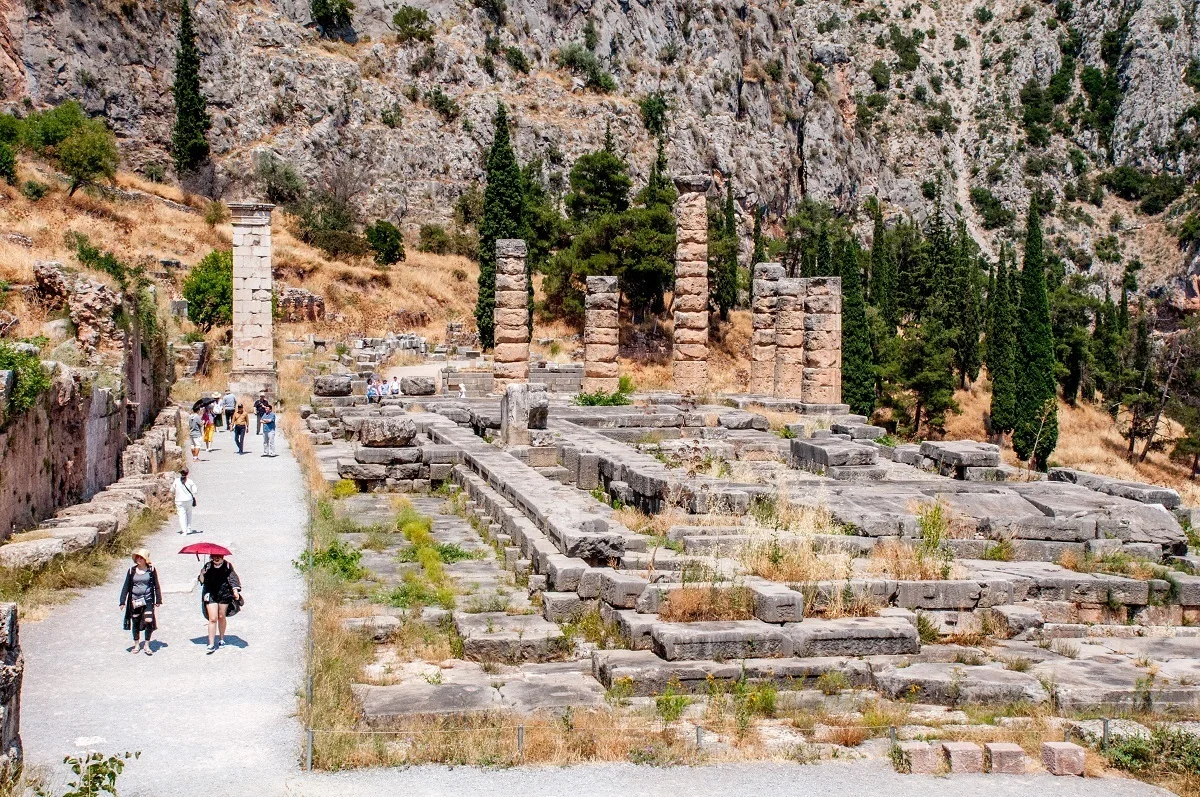
What To Bring on a Day Trip to Delphi from Athens
We were surprised at how hot and sunny it was here. The entire archaeological site is on the southern face of Mount Parnassus. That means full sun throughout the day. While there are a few trees and some shade, it is hot!
We strongly recommend coming prepared for a hot day:
- A water bottle – there is a drinking fountain near the entrance and ticket kiosk where you can fill up your bottle. We found only one drinking fountain inside the park itself (near where the trail heads to the top of the theater and the stadium).
- Sunscreen – this is absolutely mandatory!
- A hat or umbrella
- Comfortable shoes – the site can be rocky and dusty, so bring shoes where you’ll be comfortable doing lots of walking.
Note: The archaeological site is rustic. That means there are no concessions, vending machines, or anything else inside the entire park. If you think you might need it, bring it with you.
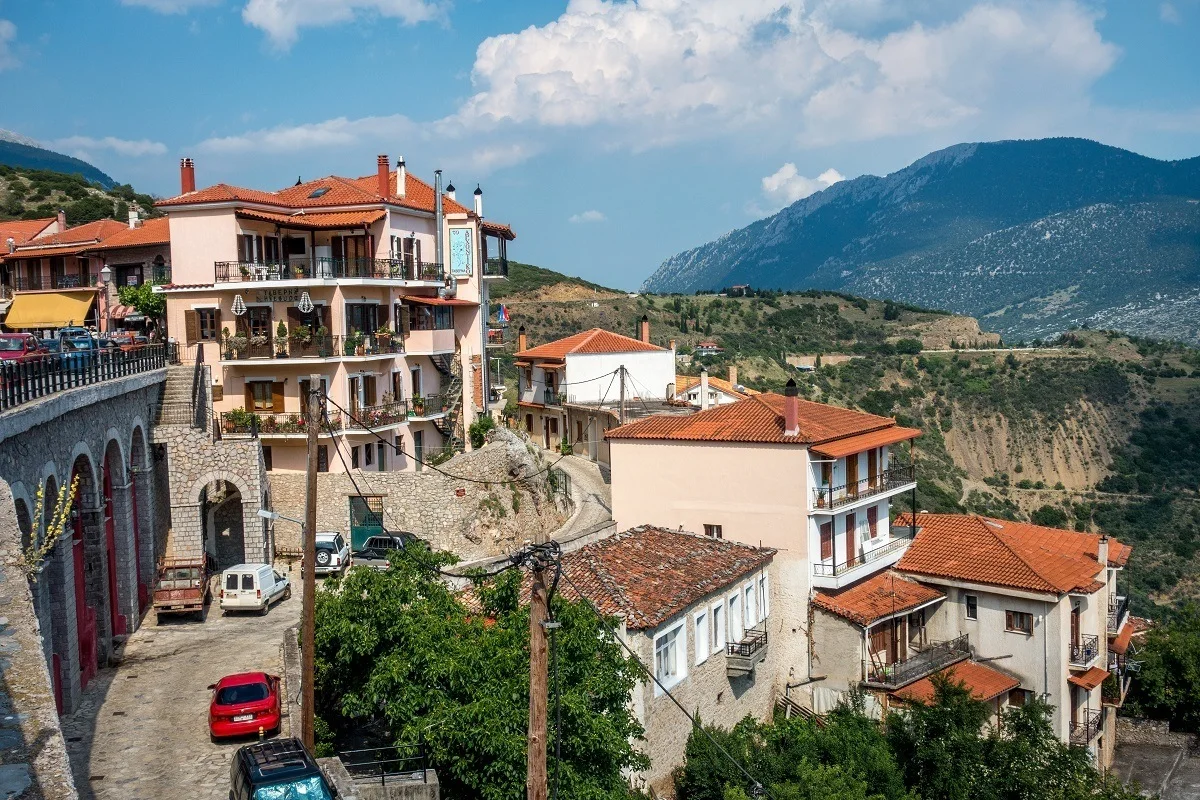
Where to Eat
The best local restaurant is a matter of opinion, but there are really two main contenders: Taverna Vakchos and Epikouros. Both serve up great Greek food…at tourist prices. And both are common with the big bus tour groups. As for which one is the best restaurant in Delphi, we really don’t have a strong opinion:
Epikouros is popular with tour groups, features stunning views of the valley and the sea. There’s a multi-season glass terrace and they feature locally grown ingredients. The meatballs are fantastic! They are open all day, which makes it a great stop if you eat at off hours like we tend to do.
Taverna Vakchos is popular with the private tour guides. The restaurant has a nice terrace with good views and features heavier meat dishes, including delicious stews of local meats. They close in the afternoons for several hours each day.
Both restaurants in Delphi are extremely popular with tour buses, which makes them kind of predictable. If you want something a bit more local, get out of town and head back to the town of Arachova, Greece. There are a number of great restaurants in the town along the main square…and no tour buses in sight! In the winter, Arachova fills with skiiers (yes, there is skiing in Greece!), but the rest of the year, it’s a nice town with great views and solid services.
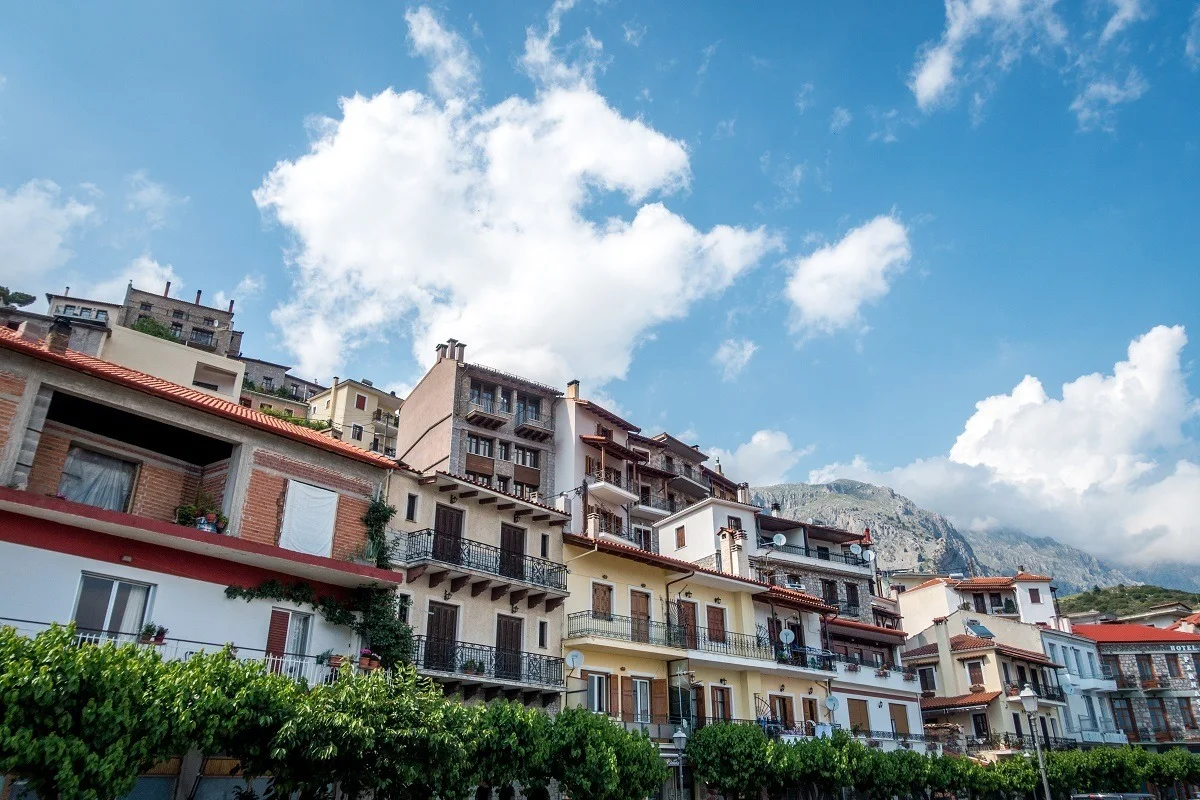
Where to Stay
First of all, you can absolutely visit both the archaeological site and the museum in the same day. And you can do both on a day trip. There’s really no reason to overnight here. However, when we were first looking into the trip, we checked out the local hotels.
The three top contenders for best hotel in Delphi are:
Hotel Varonos – Located in the heart of Delphi town and features stunning views. A quick walk to the archaeological site. (Check prices and book a room)
Amalia Hotel – Located a bit out of town and features great views and a pool. (Check prices and book a room)
Nidimos Hotel – Just outside of the main town is the best rated hotel in the area and has fantastic views. (Check prices and book a room)
Lance Longwell is a travel writer and photographer who has published Travel Addicts since 2008, making it one of the oldest travel blogs. He is a life-long traveler, having visited all 50 of the United States by the time he graduated high school. Lance has continued his adventures by visiting 70 countries on 5 continents – all in search of the world’s perfect sausage. He’s a passionate foodie and enjoys hot springs and cultural oddities. When he’s not traveling (or writing about travel), you’ll find him photographing his hometown of Philadelphia.

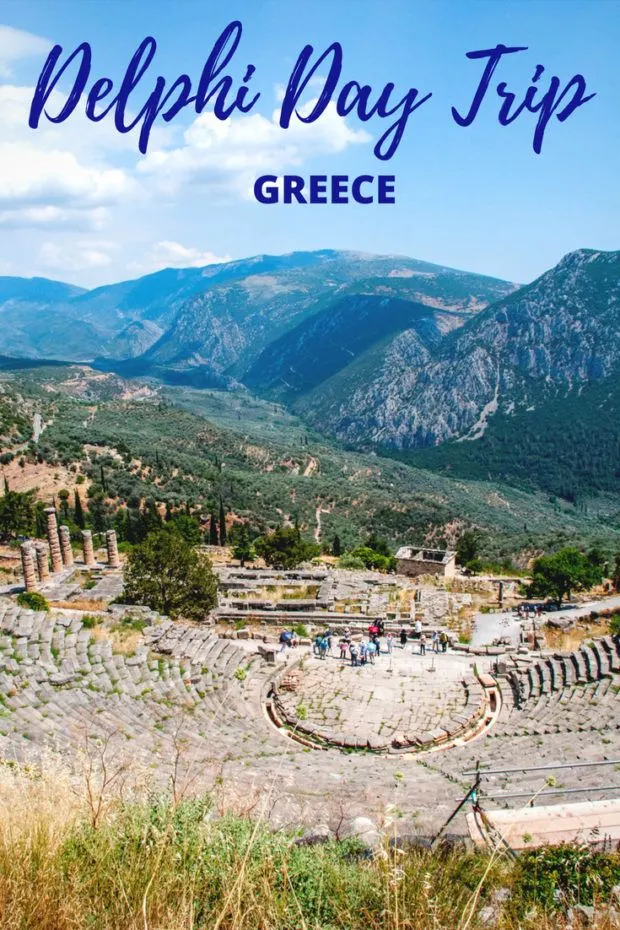
Adelaide
Friday 19th of August 2022
Excellent post, thanks so much! We found the site unbelievably majestic. The smaller temple of tholos was closed the day we went. Your post was so helpful, thanks!
sonny
Thursday 28th of April 2022
this was by far THE most fantastic post with exactly what one needs to know.... many thanks
Sonny
Michael Embry
Saturday 13th of April 2019
Enjoyed your post. I'll be in Delphi next week so you've given me a great heads-on on what to expect. Safe travels!